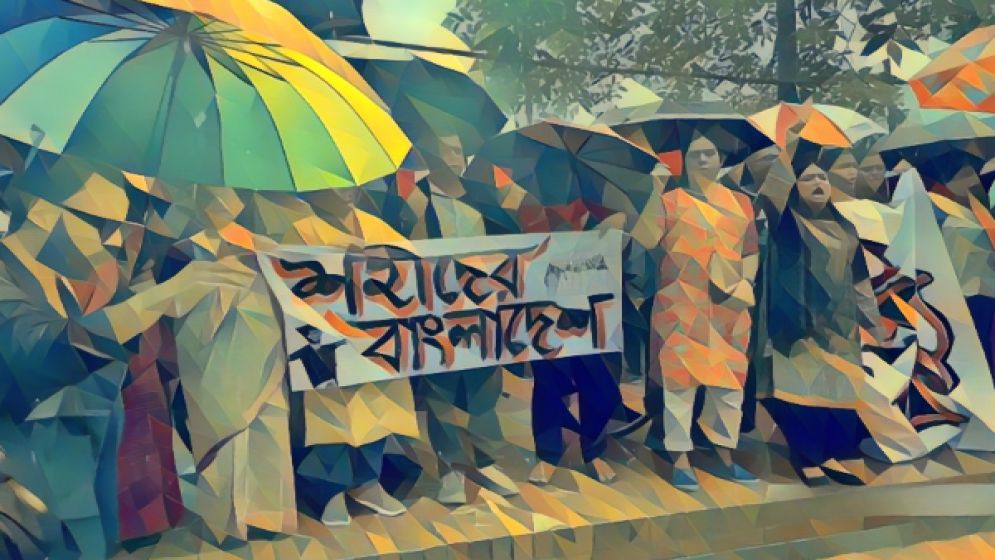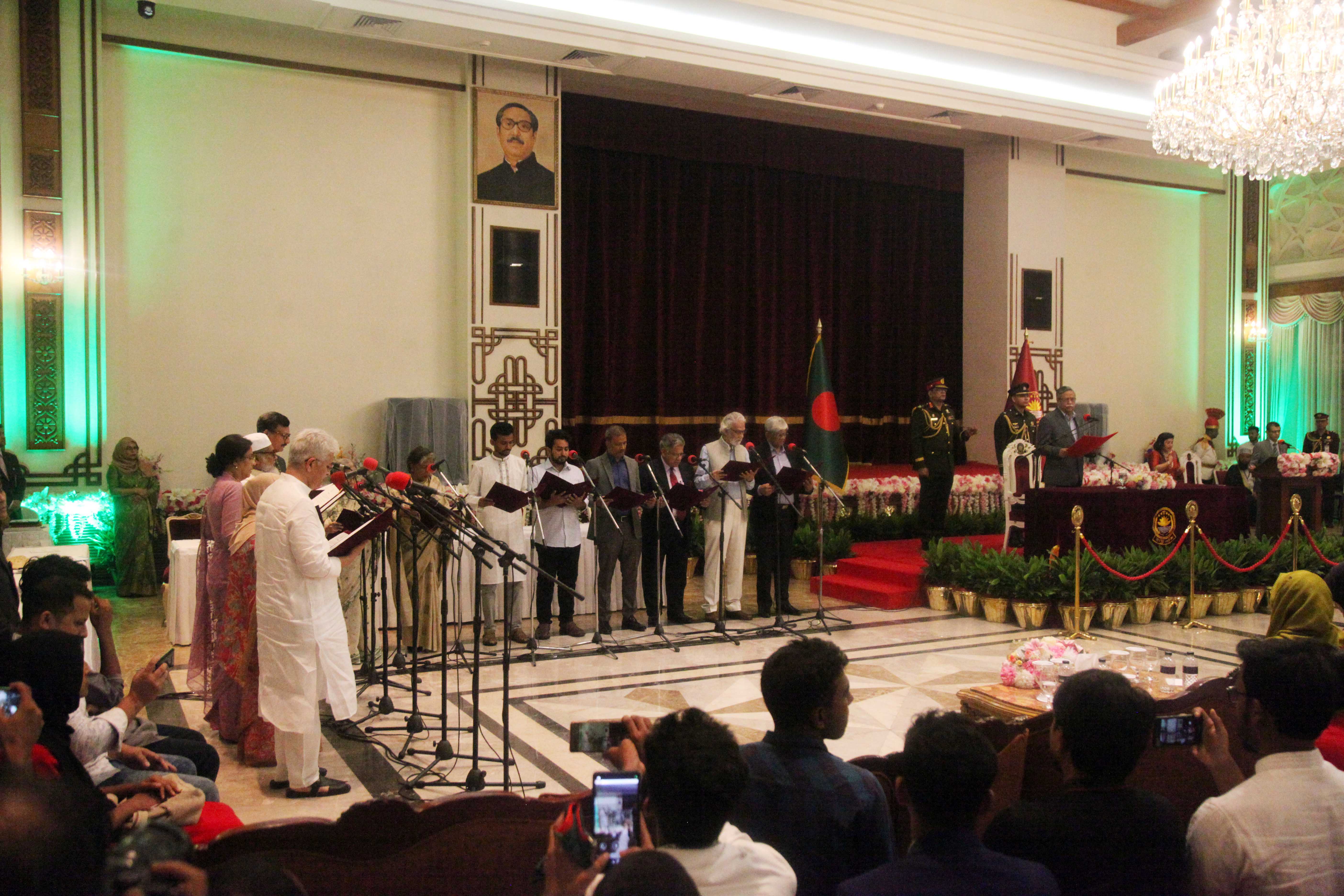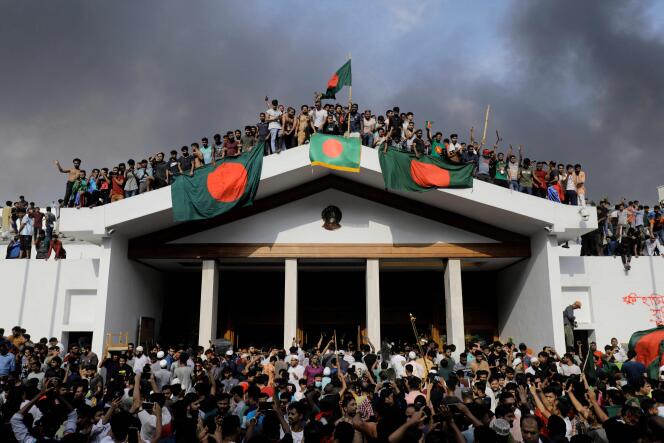The ‘Monsoon Revolution’ has put Bangladesh in truly uncharted waters

Whether in economics, sports, or politics, analysts often examine past trends to guide current understanding and predict future outcomes.
Although past performance isn't always a reliable indicator of the future, recurring patterns can sometimes provide reasonable confidence that things might follow a similar course.
However, there are moments when historical patterns offer limited insight, particularly during major political turning points. Bangladesh is currently at such a critical juncture where historical precedents might not offer accurate guidance
For instance, consider Bangladesh's last military-backed, non-partisan government.
After weeks of political deadlock, on January 11, 2007, the army chief and senior officers urged the president to declare a state of emergency and appoint a technocratic government.
This led to the arrest of politicians, including the leaders of both major parties, discussions about a new political party led by Professor Yunus, and speculation about the army chief's future role in politics, culminating in a prolonged period of uncertainty that only resolved with the December 2008 election.
Despite superficial similarities, the current situation is not like the post-January 11, 2007 scenario.
While Gen. Moeen U Ahmed forced the president to comply with his demands on television, Gen. Wakar-uz-Zaman appeared publicly on August 5, after Prime Minister Sheikh Hasina had resigned and left the country.
This wasn’t a military coup, soft or otherwise. It followed a popular uprising that rendered Hasina’s presence in Ganabhaban, and possibly in the country, untenable. The context now is distinctly different from January 2007.
Additionally, the recent uprising was led by student leaders demanding Professor Yunus’s leadership, a move supported by all democratic parties and the army.

Why is it different this time?
If the interim government extends beyond 90 days or a new party emerges, it will differ significantly from the failed minus-2 approach of 2007-08.
Sheikh Hasina had effectively depoliticized the country over the past decade through rigged elections and reliance on security forces for suppression.
Any actions taken by Yunus from this point forward will aim to restore politics, not replicate the depoliticization attempt of 2007-08. However, Yunus is not leading a caretaker government similar to those in 1991, 1996, and 2001.
The first caretaker government was established following HM Ershad's resignation in December 1990.
The opposition parties, which had been calling for his resignation, outlined the framework: Ershad would appoint a universally accepted figure, Justice Shahabuddin Ahmed, who would then form a cabinet of party-nominated individuals.
The caretaker government's sole responsibility was to conduct a free and fair election within 90 days. This model was enshrined in the constitution in 1996 but was abolished by Hasina in 2011.
Currently, however, the situation suggests that a 90-day election timeline is not realistic. This isn't a normative argument for or against delaying elections, but rather an observation that elections within 90 days seem unfeasible.
There are two key points to consider.
First, the feasibility of holding elections in 90 days is uncertain. The country recently faced severe turmoil with a week-long absence of a functioning police force and significant violence, resulting in at least 650 deaths.
Prime Minister Sheikh Hasina left the country abruptly. Such conditions often lead to international bodies like the UN stepping in, and post-conflict interim administrations in other regions typically last much longer than 90 days.
Indeed, Yunus and others have characterized the administration as interim rather than caretaker, and this distinction is significant. This is a post-conflict government tasked with reinstating basic civil administration before elections can take place.
This effort will involve not just reorganizing bureaucrats, but fundamentally overhauling the security forces, judiciary, and senior bureaucracy. Yunus has committed to starting this extensive process.
Furthermore, the students who led the uprising against Hasina have called for an extended interim period before elections, a request supported by democratic parties.
While no formal timeline has been set, the students have suggested three to six years, and the BNP has indicated they will allow time for creating an election-ready environment.
Yunus has not commented on this, but current political conditions suggest an election by November 3 is unlikely.
-66c433bb118ad.jpg)
Historical parallels
This situation differs from the contexts of 1991, 1996, or 2001. Historical parallels might be found in 1969 or 1972, though the implications are distinct.
In 1972, Bangladesh was a newly independent country, and while some suggest a fundamental transformation might be necessary, there is no indication that key figures—Yunus, the students, BNP, or the army—are pursuing that route.
Instead, the focus appears to be on restoring and reforming the existing republic, echoing the situation in 1969 when Ayub Khan resigned following a student-led uprising.
Ayub Khan was certainly a more benign dictator compared to Hasina, and his resignation was relatively orderly as he transferred power to the army.
In contrast, the political issues in Pakistan at the time were more complex than those in Bangladesh. Yahya Khan faced a more challenging yet simpler situation than Yunus does now.
Nonetheless, there is no reason to believe Yunus will disregard the popular mandate after the election.
This time, hopefully, will be different.
A more ironic historical parallel between 2024 and 1969 emerges when considering the events that followed the 1968-69 uprising.
The youth of Bangladesh then honored Sheikh Mujibur Rahman with the title of Bangabandhu, and the 1970 election marked the peak of the Awami League's popularity.
Hasina, having built a personality cult around Mujib, saw his statues become regime symbols, which were swiftly torn down by today's youth following her departure from Dhaka.
It is important to emphasize Hasina’s flight, as it marks a significant departure from the past.
The Hasina regime was notably more repressive, corrupt, criminal, and totalitarian than any previous government, and it was more centralized around her persona than any before. Its collapse has been more complete and personalized than any other.

A political vacuum
The impact of Hasina’s departure will be felt long after normalcy returns to Dhaka.
There is now a political vacuum where the Awami League once stood. We have seen similar declines before, such as the Muslim League after 1968-69. It is likely that the Awami League may face a similar fate.
That is perhaps one way this time is not different.
Another, more concerning historical parallel, which is less frequently discussed, involves President Ziaur Rahman’s assassination on May 30, 1981. Following his death, then-army chief Lt Gen HM Ershad pledged to uphold the constitution.
Justice Abdus Sattar, Zia’s elderly vice president, assumed the presidency and was later elected in his own right. Initially praised for not being like other power-hungry generals in the region, Ershad eventually proved to be just that.
Yunus has broad support from key political stakeholders in Bangladesh today. As an octogenarian, he is unlikely to seek to remain in power indefinitely.
However, given his age and the magnitude of Bangladesh’s challenges, even someone half his age would struggle. Gen Zaman, meanwhile, has 34 months remaining in his term.
Here’s hoping that the period from 2025-26 does not echo the situation of 1982!
—-
This article was previously published in Nuraldeen. It is republished in Bangla Outlook with stylistic edits and the author’s permission.

